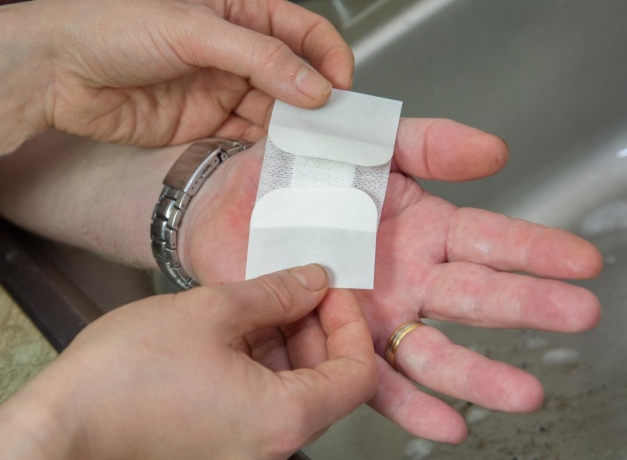Wounds are a natural part of life—whether from cuts, scrapes, burns, or surgeries. Most wounds heal smoothly when kept clean and protected, but sometimes an infection can develop. One of the clearest signs of infection is purulent discharge, a thick, yellow, green, or brown pus-like fluid. While some people think a little pus is normal, ignoring it could lead to serious complications. In this blog, we'll discuss what purulent discharge in wounds means, why it occurs, and when you should seek medical attention.
What Is Purulent Discharge in Wounds?
Purulent discharge in wounds refers to the presence of pus, which forms when the body's immune system fights off bacteria or other pathogens at the injury site. White blood cells rush in to destroy harmful microbes, and as they die, they combine with bacteria, tissue debris, and fluid to create pus.
Its characteristics include:
-
Thick or sticky texture
-
Yellow, green, or brown coloration
-
Foul odor in many cases
-
Accompanied by redness, swelling, or pain around the wound
Why Does Purulent Discharge Happen in Wounds?
Wounds can become infected for several reasons, including:
-
Poor wound cleaning or dressing allowing bacteria to enter
-
Foreign objects (like dirt or splinters) trapped inside the wound
-
Weakened immune system slowing the healing process
-
Deep cuts or surgical wounds that are harder to heal naturally
-
Unhygienic conditions during or after an injury
Warning Signs That Indicate Infection
If you notice purulent discharge, watch for these additional symptoms:
-
Increasing redness and swelling around the wound
-
Warmth in the skin surrounding the area
-
Persistent or worsening pain
-
Fever or chills
-
Red streaks spreading outward from the wound (a sign of spreading infection)
-
Slow or no healing after several days
These are strong indicators that the infection may be progressing and require medical care.
Risks of Ignoring Purulent Discharge in Wounds
Leaving purulent discharge untreated can lead to serious complications such as:
-
Abscess formation: A pocket of pus develops under the skin.
-
Tissue damage: Prolonged infection can destroy healthy skin and tissue.
-
Blood infection (sepsis): Bacteria can enter the bloodstream, leading to a life-threatening condition.
-
Chronic wounds: Injuries may fail to heal and become long-term problems.
How Doctors Diagnose Infected Wounds
Doctors use several methods to assess purulent discharge in wounds:
-
Physical examination of redness, swelling, and discharge
-
Swab tests to identify bacteria or fungi
-
Blood tests to check for systemic infection
-
Imaging tests (like ultrasound or MRI) in deep or complex cases
Treatment for Wounds With Purulent Discharge
1. Cleaning and Dressing
The first step is to thoroughly clean the wound with antiseptic solutions. Doctors may remove dead tissue and apply sterile dressings.
2. Antibiotics
Oral or topical antibiotics are often prescribed for bacterial infections. In severe cases, intravenous antibiotics may be necessary.
3. Drainage
If an abscess forms, a doctor may need to drain it surgically to allow healing.
4. Pain and Symptom Relief
Pain relievers, fever reducers, and anti-inflammatory medications help manage symptoms while the infection clears.
5. Follow-Up Care
Regular dressing changes and monitoring ensure the infection does not return.
Preventing Purulent Discharge in Wounds
-
Wash wounds immediately with clean water and mild antiseptic
-
Keep wounds covered with sterile dressings
-
Change dressings regularly
-
Avoid picking at scabs or wounds
-
Seek medical attention for deep cuts or animal bites
-
Strengthen immunity with proper nutrition and rest
Final Thoughts
Purulent discharge in wounds should always be taken seriously. While small infections may clear with good hygiene and wound care, persistent or worsening pus signals a deeper problem. Prompt medical treatment not only speeds up healing but also prevents life-threatening complications like sepsis. Always listen to your body—if your wound doesn't look or feel right, seek professional help.
Frequently Asked Questions (FAQs)
Q1. Is a little pus in a wound normal?
Small amounts can appear as part of the healing process, but thick, foul-smelling purulent discharge usually signals infection.
Q2. How long should a wound take to heal without purulent discharge?
Minor wounds often heal within 7–10 days. If pus appears or healing slows, infection may be present.
Q3. Can home remedies cure wound infections?
Basic cleaning may help in very mild cases, but most infections with pus require antibiotics or professional care.
Q4. What happens if purulent discharge is left untreated?
It can lead to abscesses, tissue damage, or sepsis.
Q5. Should surgical wounds produce purulent discharge?
No. Post-surgical wounds may produce clear fluid, but purulent discharge indicates possible infection and needs medical review.






